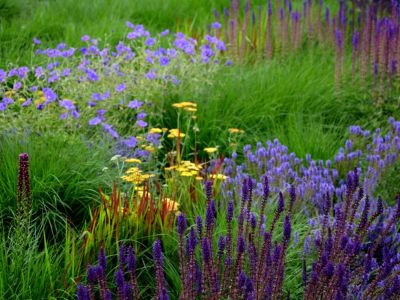Prairie Garden Design
The first step to this low-maintenance plot is to come up with a prairie garden plan. Prairie garden design requires you to choose the plants that you want in the space. Make your own prairie garden plan and select seeds that are beneficial to wildlife and will not become nuisance plants. Give some consideration regarding invasive species, as many plants included in prairie garden mixes may spread and take over the space. You also have to remove any competing plants, such as sod, and till the soil. You can dig out these plants or lay black plastic over the area for two months. This is called solarization and will kill off the under-laying seeds and sod.
Plants for Prairie Gardens
Some plants for the prairie garden are best suited for dry, gravelly soil while others need a richer, loamy site. Know your plot composition so you can choose the best selections. The best bets are native plants that would spring up naturally. These require less care and provide food for wild birds and animals. A selection of perennial plants might include:
Milkweed Coneflower Black-eyed Susan Goldenrod Coreopsis
Mix in some native grasses for contrast and cover for animals. Indian grass, switchgrass and bluestem varieties will come up season after season. Introduce variety when creating a prairie style garden and you will have the most natural results.
Creating a Prairie Style Garden
The most economical way to start the garden is by seed, but you can intersperse potted plants to get a jump-start on the meadow. Seeds may take up to two years to fill in and produce a thick, full site. Sow seeds after frost when spring rains will help keep them hydrated. Keep the seedlings wet and maintain vigilance for weeds during the gardens establishment. Apply light mulch after sowing seeds to protect them from birds and wind as they germinate.
Caring for Prairie Gardens
The beauty of a natural meadow is its ease of care. Caring for prairie gardens requires only moderate watering once established. Prairie gardens that dry out may catch fire in certain areas. For this reason, it is a good idea to provide a buffer of soil or sod between buildings and your home. Plants with a capacity for invasiveness need to have the seed heads removed at the end of the season. Leave the seed heads on the remaining plants as food for animals and to allow them to self-sow. At the end of the season, mow the spent plants to the ground and leave the cuttings as mulch. The garden will resprout in spring and provide a fuller more vibrant space with every successive year.
